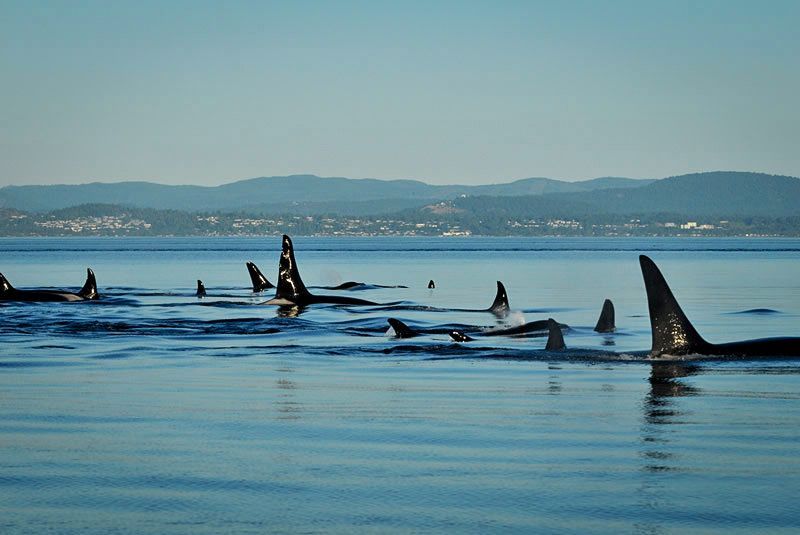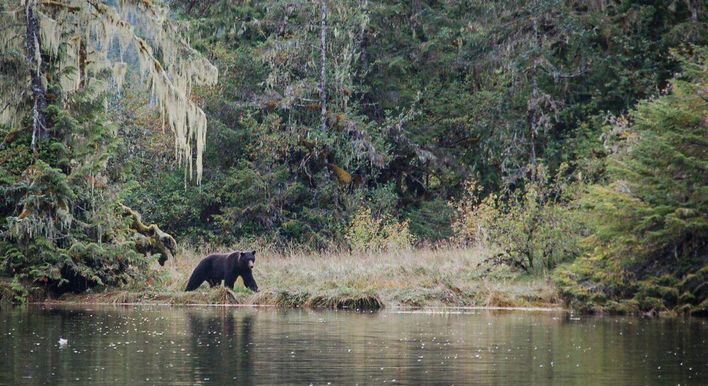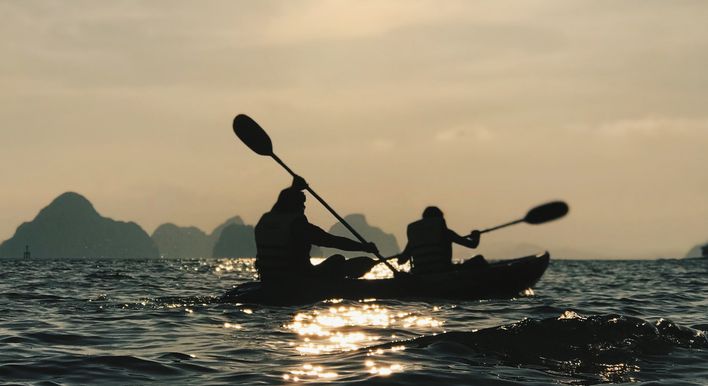Chinook (King) Salmon
A tour we think you'll love
The life cycle of a chinook (and all 5 species of Pacific salmon) salmon consists of several distinct phases, each with unique physical and behavioral characteristics. It is a complex and fascinating process that takes place over several years and involves multiple distinct phases, from the egg stage to the death stage. Each phase has its own unique challenges, and the survival of the species depends on successful completion of the life cycle.
The phases of a chinook salmon from birth to death are as follows:
-
Egg Stage: The life cycle of a chinook salmon begins when the female salmon lays her eggs in the gravel of a freshwater stream. The eggs are fertilized by a male salmon, and the female covers them with gravel to protect them from predators.
-
Alevin Stage: After two to five months, the eggs hatch into alevin, which are small, yolk-sac attached fish. Alevin remain hidden in the gravel until they have absorbed the yolk sac, at which point they emerge and begin feeding on tiny aquatic organisms.
-
Fry Stage: As the alevin grow, they develop into fry, which are more active and mobile than the alevin. Fry begin to form schools and feed on larger prey, such as insect larvae and small fish.
-
Smolt Stage: After one to two years in freshwater, the young salmon undergo a physiological transformation known as smoltification, which prepares them for life in the ocean. During this phase, the salmon’s body adapts to saltwater, and they begin to develop a silvery coloration. Smolts begin to migrate downstream to estuaries and eventually the ocean.
-
Ocean Phase: The ocean phase of a chinook salmon’s life can last for several years, during which the salmon grow to their full size and maturity. The salmon feed on a diet of plankton and other small fish, and they migrate hundreds or thousands of miles through the ocean. Adult chinook salmon can weigh up to 100 pounds and can be several feet long.
-
Spawning Stage: When chinook salmon reach maturity, they begin their final journey back to the freshwater streams where they were born to spawn. They swim upstream against strong currents and often leap over waterfalls and obstacles to reach their spawning grounds. Once they reach their spawning grounds, the males and females mate, and the females lay their eggs in the gravel of the stream, completing the life cycle.
-
Death Stage: After spawning, chinook salmon are typically exhausted and weakened from their journey. Many salmon die soon after spawning, providing a source of nutrients for other organisms in the ecosystem. Some salmon, however, may survive and repeat the life cycle.

Dwindling Numbers
The population decline of chinook salmon in the Pacific Northwest is a complex issue that has far-reaching impacts on the ecosystem and the livelihoods of local communities. Chinook salmon, also known as king salmon, is a species of salmon that is native to the Pacific Ocean and is one of the largest and most important species of salmon in the world. In recent decades, the population of chinook salmon has declined dramatically in the Pacific Northwest, causing concern among environmentalists, commercial fisherman, and the native communities who rely on the salmon for food and cultural practices.
There are several factors that have contributed to the decline of chinook salmon in the Pacific Northwest. One of the most significant is the construction of hydroelectric dams on the Columbia and Snake River systems, which has had a significant impact on the salmon’s ability to migrate upriver to spawn. Dams have created barriers to migration and have also altered the flow of the rivers, making it more difficult for the salmon to swim upstream. Additionally, the dams have changed the temperature and quality of the water, which has had negative effects on the salmon’s habitat and overall health.
Another factor that has contributed to the decline of chinook salmon is overfishing. Commercial fishing has been a major industry in the Pacific Northwest for decades, and while it has provided jobs and economic benefits to the region, it has also taken a toll on the salmon populations. Overfishing has depleted the numbers of chinook salmon in the Pacific Ocean, and many populations are now considered to be at risk. In addition, the increasing demand for salmon products has led to more intense fishing efforts, which has further reduced the salmon population.
A third factor that has contributed to the decline of chinook salmon is the loss of habitat. The Pacific Northwest is home to a number of important salmon habitats, including estuaries, rivers, and streams. However, human activities such as logging, urbanization, and agriculture have resulted in the destruction of these habitats, making it more difficult for the salmon to thrive. The loss of habitat has also affected the food chain and water quality, which has further impacted the health of the salmon.
The decline of chinook salmon in the Pacific Northwest has far-reaching impacts, both ecological and economic. Ecologically, the decline of the chinook salmon has had a ripple effect on the entire ecosystem, as other species depend on the salmon for food and habitat. Commercially, the decline of the chinook salmon has had a significant impact on the fishing industry and the livelihoods of local communities who rely on the industry for their income. The decline has also had cultural impacts on the native communities who have relied on the salmon for food and cultural practices for generations.

Southern Resident Orcas
Because chinook salmon are a primary food source of the Southern Resident Orca Whales, the lower numbers of Chinook Salmon has had a significant impact on the declining population of these whales in the Pacific Northwest.
Southern Resident Orca Whales are a genetically distinct population of orcas that are found primarily in the waters off the coasts of Washington State and British Columbia. They are listed as an endangered species under the U.S. Endangered Species Act and the Canadian Species at Risk Act.
The Southern Resident Orca Whales primarily feed on chinook salmon, with studies indicating that over 80% of their diet consists of this species of salmon. As a result, the Southern Resident Orca Whales are struggling to find enough food to sustain themselves, particularly during the crucial summer months when they rely heavily on the Chinook salmon runs in the Salish Sea and the Columbia River Basin.
The declining population of Southern Resident Orca Whales is also attributed to other factors such as pollution, vessel noise and disturbance, and climate change. Pollution and vessel noise can affect the whales’ ability to hunt for food, communicate with each other, and navigate their environment, while climate change can impact the availability of food and disrupt their habitat.
The decline in the population of Southern Resident Orca Whales has significant ecological and cultural implications. These whales play an important role in the ecosystem, and their loss could have far-reaching impacts. Additionally, they have significant cultural and spiritual importance to the indigenous communities in the region, who have depended on the whales for their cultural practices for centuries.
Efforts are being made to address the population decline of both chinook salmon and Southern Resident Orca Whales. One of the most promising efforts has been the removal of dams and the restoration of river habitats. This has helped to improve the migration patterns of the salmon and has also restored the health of the habitats and the water quality. In addition, the fishing industry has been working to reduce the impact of commercial fishing on the chinook salmon populations, by implementing regulations and policies that limit the number of fish that can be caught.








